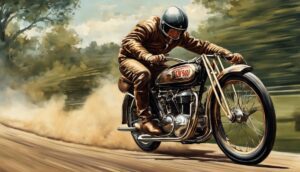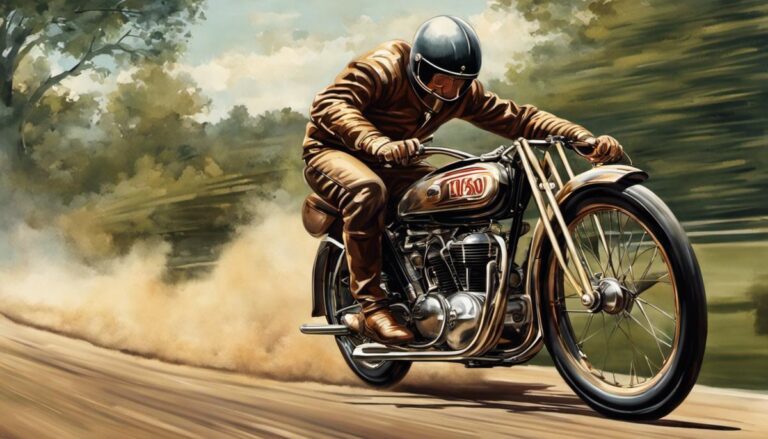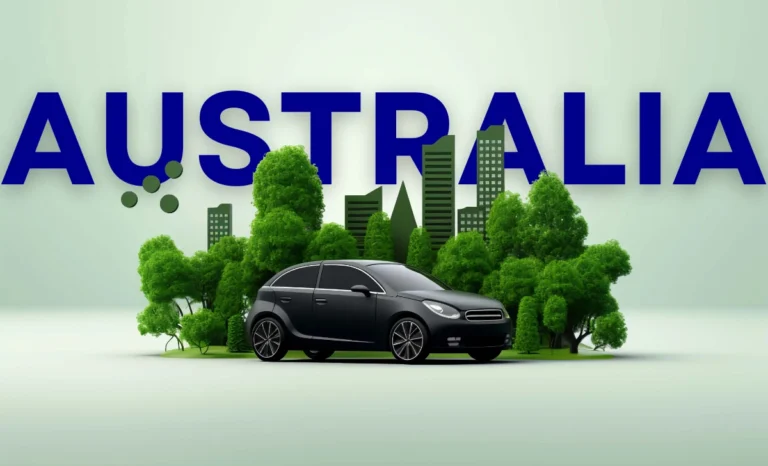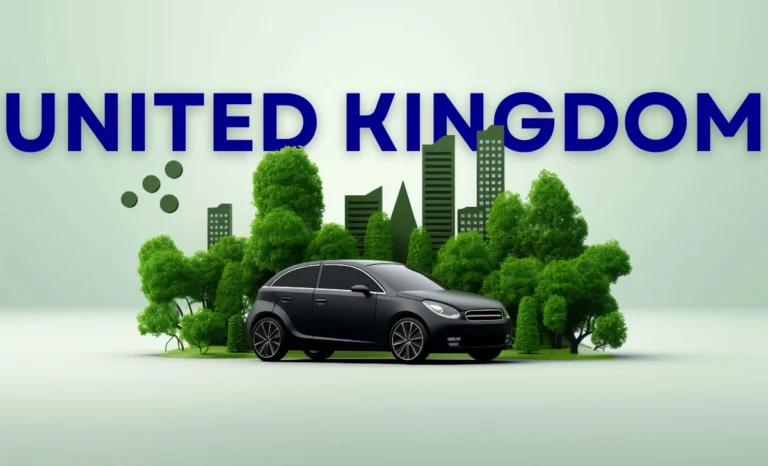Imagine the sensation of unfettered speed, the wind in your face, and the thrilling roar of a potent engine beneath you. This adrenaline-stoked experience is the exhilarating world of the fastest motorcycles. This realm is where human ingenuity meets mechanical prowess, resulting in machines that are the very embodiment of speed and power. Our journey begins with an analysis of the fascinating chronicles of fast motorcycles, drawing lessons from the illustrious pioneers who broke barriers to redefine speed.
We’ll delve into the intricate engineering principles that underpin these speed demons, demystifying the terms and mechanics you often see in catalogs or reviews. Furthermore, we’ll scrutinize the kings of speed on two wheels existing today, weighing their strengths and weaknesses. We concede that with great speed comes great danger, thus, shedding light on potential risks and indispensable safety practices for high-velocity motorcycles. Lastly, we’ll step into the captivating, fast-paced world of motorcycle racing space and appraise associated legal implications.
In this article
In this article
History of Fastest Motorcycles
The Dawn of Speed: Early Motorbike Pioneers
The origins of the fastest motorcycles date back to the late 19th and early 20th centuries, marking an era of innovation and experimentation in two-wheeled transportation. Motorcycle manufacturers such as Triumph, Harley-Davidson, and Indian Motorcycles, among others, dictate the pace of this competition for speed.
Indian Motorcycles, in particular, was an early pioneer in making fast bikes. In 1903, the firm’s ‘Camel Back’ model could reach a speed of 56 mph – quite an achievement for the era.
One of the early speed records set during this era was by Glenn Curtiss in 1907. Riding a V8 motorcycle, he reached a blistering speed of 136.36 mph. Although the Federation Internationale de Motocyclisme didn’t certify it, this record stood for over 20 years.
Speed, Innovation, and Evolution
As technology developed, so did the speed capabilities of motorcycles. Bikes became lighter and more powerful, thanks to engine advancements and the incorporation of new materials, like steel and aluminum, in their design.
In the 1930s, BMW brought forth the BMW R37, achieving unprecedented speeds due to its innovative overhead camshaft design and lighter-weight materials. This was followed by the Vincent HRD Series-A Rapide in 1937, which could reach a top speed of 110 mph, setting a new record for production motorcycles at the time.
Breaking the 200 mph Barrier
It was not until the latter half of the 20th century that the 200 mph barrier was truly challenged. This came with the advent of advanced aerodynamics and further engine technology advancements.
In 1970, Don Vesco pushed the limits of speed on his Yamaha Big Don, reaching an astonishing 251.924 mph, setting a motorcycle speed record that was recognized by the FIM. However, the record would not be officially broken until 1990 when Dave Campos reached a top speed of 322.149 mph on a Harley-Davidson streamliner dubbed “Easyriders.”
The Reign of Hypersport Motorcycles
The 21st century saw the rise of the Hypersport motorcycles, designed for speed and acceleration. Manufacturers like Ducati, Kawasaki, and Suzuki became the major players in this space, releasing models capable of hitting incredible top speeds while also retaining daily rideability.
The Suzuki Hayabusa, released in 1999, captured the world record for the fastest production motorcycle, hitting 188 to 194 mph. The Kawasaki Ninja H2R, a hypersport and track-only motorcycle, has been recorded to hit speeds of up to 249 mph unofficially, pushing the boundaries of speed and technology for production motorcycles.
The Intersection of Motorcycle Speed and Technology
The Dodge Tomahawk V10 Superbike leads the pack as the fastest production motorcycle at present, boasting a top speed of 350mph. Yet, it’s worth mentioning that the Guinness Book of World Records has not recognized this feat as they mandate the speed to be achieved in both directions and then take an average, criteria that the Tomahawk has yet to fulfill.
Also Read: Top 10 Iconic Cars in Automotive History
Indeed, the thirst for speed plays a crucial role in stimulating technological advancements and innovation within the purview of motorcycle engineering. The annals of the speediest motorcycles narrate the story of our progress while simultaneously hinting towards the exciting prospect of further technological evolution.

Speed Ratings and Mechanisms
Decoding the Motorbike Speed Metrics
The equation for speed in motorcycles revolves around intricate engineering and efficient design principles. Key factors determining speed include the engine size, horsepower, torque, and the bike’s weight. As a rule of thumb, a larger engine signifies much higher power outflow, enabling the bike to reach faster speeds. Meanwhile, horsepower quantifies the engine’s prowess, meaning motorcycles with greater horsepower can achieve higher speeds.
Additionally, torque, a vital attribute, essentially acts as the propelling force behind your motorbike and signifies its capacity to perform work and increase speed. Greater torque corresponds with better acceleration, directly impacting the motorcycle’s maximum speed. Lastly, weight also factors into the speed dynamics: a lighter bike faces lesser resistance and hence can attain higher speeds.
Mechanisms Contributing to Motorcycle Speed
Several design mechanisms are geared towards enhancing a motorcycle’s rate. One such critical element is aerodynamics. Manufacturers constantly experiment with the shape and design of motorcycles in order to reduce air resistance and enable faster speeds. Streamlined, slim profiles are more aerodynamic by nature, and consequently faster.
They also tweak the gearing ratio based on their desired speed outcomes. A high gear ratio results in a fast acceleration, while a low one aids in achieving higher top speeds. Some manufacturers also employ the use of turbochargers and superchargers that forcefully induct higher amounts of air into the engine, thereby boosting speed temporarily.
Measuring and Rating Motorcycle Speed
Now comes the question, How do manufacturers measure and rate their motorcycles’ top speeds? Primarily, they opt for set standard methods to test the speed. This typically involved conducting speed tests on a closed track in controlled conditions, with professional riders.
One widely accepted method is to run the motorcycle over a fixed distance, usually a mile or a kilometer, and then utilize precise timing equipment to measure the time taken, calculating speed from these figures. Some manufacturers may also employ the use of dynamometers, a type of machine that can replicate road conditions and measure performance metrics of motorcycles, such as horsepower and torque.
It’s worth noting, however, that the speeds achieved in these controlled environments will likely surpass the speeds potentially achievable on average roads given traffic laws and fluctuating conditions, albeit they provide a standard measure of performance to compare against other motorbikes. Thus, the top speed outlined by the manufacturer should be taken as an estimate under perfect circumstances and not a consistent and reliable speed under all conditions.
Refining your skills and training is paramount for individuals eager to fully understand and harness the power of high-speed motorcycles. Effectively, mastering these principles will decidedly be advantageous in determining what to look for when pursuing the fastest motorcycle.

Top Speed Motorcycle Models
Premier Speedsters: The Leading Contenders
The sphere of speed and power hosts many of the world’s breathtaking motorcycles, many of which consistently push boundaries in performance and top speeds. Of these high-octane models, a select few distinguish themselves through their phenomenal speed and innovative engineering.
Ducati Panigale V4 R
The Ducati Panigale V4 R is a motorcycle that induces both exhilaration and awe. It packs a 998cc Desmosedici Stradale R engine yielding a mind-boggling 221 horsepower. With an added racing kit, this Italian masterpiece can reach an astonishing top speed of 202 mph. The pros of owning this Ducati masterpiece include superior speed, aerodynamic design, and leading-edge technology. However, the cons include a hefty price tag and high maintenance costs.
Kawasaki Ninja H2R
Making history with its supercharged engine, the Kawasaki Ninja H2R is nothing short of a speed demon. It comes with a massive 998cc supercharged DOHC inline-4 engine exhibiting an impressive 310 horsepower. Contributing to its top recorded speed of 249 mph are design features like aerodynamic wings and a trellis frame. While its speed and acceleration are significant pros, the motorcycle’s cons include its restriction to closed-course riding and an expensive price tag.
Suzuki Hayabusa
Known for its impressive velocity, the Suzuki Hayabusa runs on a 1340cc 4-cylinder 16-valve engine that emits an incredible 197 horsepower. It boasts a top speed of 185 mph, making it a staple in any list of the world’s fastest motorcycles. Its sleek, aerodynamic design and comfortable seating are among its pros. On the flip side, it has less-than-impressive fuel efficiency and a somewhat dated design.
BMW S1000 RR
The BMW S1000 RR prides itself on a balanced combination of speed, power, and agility. Its 999cc inline 4-cylinder engine offers an impressive horsepower figure of 205, enabling the motorcycle to clock a top speed of 185 mph. Key pros include its advanced electronics, agile handling, and dynamic traction control system. However, it’s not well-suited to novice riders and comes with high maintenance costs.
MV Agusta F4 RR
Italian superbike MV Agusta F4 RR effortlessly positions itself among the world’s fastest with a top speed of 185 mph. It’s powered by a 998cc 4-cylinder short-stroke engine yielding a formidable 201 horsepower. Pros include its top speed, iconic design, and cutting-edge technology. Cons encompass high initial cost and expensive parts.
The technical advancements in the realm of motorcycles have led to the creation of speed demons that reign supreme in terms of power and velocity. Their blistering speeds and high-performance capabilities provide riders with a unique and thrilling experience, firmly establishing their stance in the world of the most formidable motorcycles.

Risks and Safety Measures
Grasping the Risks Accompanied by High-Speed Motorcycles
Although these high-speed motorcycles are deemed to be the ultimate adrenaline inducers, they come with their fair share of hazards. The most prevalent risk entails their command of speed and power, which can often prove formidable for even the most seasoned riders. An abrupt surge in speed can easily spiral into perilous situations leading to loss of control, and potential crashes.
Accidents at such high speeds often lead to serious consequences given the point of impact’s remarkable speed. Unlike cars, motorcycles lack a safety shell, airbags, or safety belts to cushion riders during collisions. Consequently, the gravitas of the injuries can be severe, even fatal. Furthermore, motorcycles’ lesser visibility compared to cars heightens the risk of accidents all the more, particularly at greater speeds.
Essential Safety Gear
To minimize these risks, the use of appropriate safety gear is crucial. A proper helmet is the most essential, saving lives by protecting the head from fatal injuries. The helmet should fit snugly, covering the full face, and ideally, have efficient ventilation to prevent fogging.
Beyond a helmet, other safety gear includes motorcycle jackets and pants made of abrasion-resistant material like leather or reinforced synthetic material. These clothes should have protective padding on critical impact areas like elbows, knees, and back. Proper gloves that provide a good grip, boots that cover the ankles, and body armor also contribute significantly to a rider’s protection.
Riding Techniques for High-Speed Motorcycles
Proper riding techniques can make a vast difference in safety when riding high-speed motorcycles. These techniques not only involve how to handle the bike at high speeds but also how to apply brakes effectively and navigate turns and overtakes.
Braking appropriately is critical. At high speeds, braking suddenly can destabilize the motorcycle, increasing accident risks. To manage this, riders must master the technique of progressive braking, i.e., apply the brake gradually, increasing pressure smoothly.
Cornering is another skill that demands mastery. High-speed motorcycle riders must understand how to distribute their body weight and use countersteering techniques to navigate corners or curves efficiently at high speeds.
Also Read: Exploring the Thrill of Riding a 250cc Yamaha Dirt Bike
Safe Riding Habits on High-Speed Motorcycles
Safe riding habits can go a long way in ensuring rider safety. These habits include regular maintenance of the motorcycle, following traffic rules, keeping a safe distance from other vehicles, and avoiding distractions.
Routine inspections and regular maintenance of the motorcycle are critical to ensure its optimum functionality. It is essential to check tire pressures, oil levels, brake functionality, and lighting systems before each ride. Similarly, obeying traffic rules, being alert and patient on the road, and avoiding aggressive maneuvers like tailgating and weaving are all key to avoiding accidents.
Riders should also be vigilant and stay ahead of the situation by anticipating hazards on the road. Awareness of one’s surroundings, including the vehicles behind, beside, and ahead, as well as the road condition, is crucial in minimizing risks during high-speed rides. Lastly, avoiding riding under the influence of alcohol or drugs, avoiding fatigue, and using reflective gear while riding at night are practices that enhance rider safety.
Embracing the High-Speed Motorcycle Journey
The invigorating experience of riding high-speed motorcycles is unmatched, simultaneously budding an adrenaline rush and presenting monumental risks. As motorcycle enthusiasts, the responsibility lies upon us to recognize these risks, and to encounter them with the appropriate safety gear, mastering progressive riding techniques, and establishing secure riding habits.

Photo by markbasarabvisuals on Unsplash
Racing and Legal Frameworks
Fully Understanding Racing Legality and Frameworks in Motorcycle Riding
Motorcycle racing is a well-renowned sport across the globe that significantly appeals to both ardent hobbyists and professionals with its emphasis on speed, resilience, and accuracy. This energetic industry is full of high-speed motorcycles, precisely crafted for competitiveness, with engines designed for high performance and an aerodynamic structure.
The Grand Prix Motorcycle Racing, or MotoGP, holds the top position among motorcycle events, stretching limits of speed, and control, with high-speed motorcycles often surpassing 220 mph. Another prominent racing event is the Isle of Man TT, known for its dangerous routes, but its rich history and speed attract a plethora of participants.
Noteworthy motorcycle racing series such as the Superbike World Championship, colloquially known as WorldSBK, and the Fédération Internationale de Motocyclisme (FIM) Speed World Championship are crucial in shaping the fastest and technologically advanced motorcycles available.
Stringent standards are applied within these racing events to maintain speed, safety, and engineering integrity. Innovations are constantly explored to gain a competitive advantage. However, these racing models primarily act as prototypes unfit for public roads, thus introducing the concept of homologation, where bike manufacturers are mandated to sell a certain number of a particular model to validate its eligibility for racing.
While these bikes represent maximum motorcycle performance, their use on public roads is entwined in a legal knot. Each US state posits its speed limit regulations, which varies from 20 mph to 85 mph, depending on the type of road and area.
However, the maximum speed limit for motorcycles is not clearly defined due to multiple limited factors, including safety equipment and sound emissions. High-speed motorcycles should be equipped with turn signals, rearview mirrors, and suitable tires, and in many US states, helmets are obligatory.
Motorcycles that can reach the speeds seen in MotoGP races aren’t just inadvisable for US roads; they’re also illegal as they lack necessary commuter features like lights and license plate holders.
Motorcycle modifications can then become a gray area where customization is fine as long as it doesn’t cross federal legal boundaries by excessively increasing noise, disabling safety measures, or drastically elevating speed.
Understanding motorcycle racing and navigating its complex legal frameworks might be intimidating, but the gratification for enthusiasts is immense. While the fastest and most fierce motorcycles are limited to racing circuits, finding a high-speed bike that combines thrill and legality for street use is feasible and within reach.

Indeed, delving into the intriguing history of the fastest motorcycles and grasping the technicalities behind their top-notch speeds adds a new layer of appreciation. Experiencing the dynamic world where the fastest motorcycles exist casts light on the engines’ intricate details, design aesthetics, and the thrill these beasts provide. Still, the thrill of speed must never overshadow the critical value of safety. It’s vital to adhere to safety measures, refine riding techniques, and employ safe habits, curbing the risks involved with high-speed motorcycles.
Finally, immersing into the motorcycle racing milieu not only proffers an opportunity to witness the glory of these machines but also emphasizes adhering to the existing legal frameworks. Our journey with the fastest motorcycles converges here, but our quest for speed doesn’t; in fact, it’s perpetually evolving, like the machines we’ve come to admire.





